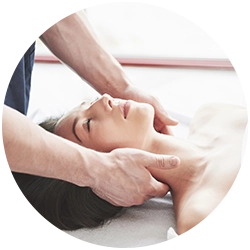Meet the Experts
Joel Pukalo
Registered Psychologist
Andrea Pukalo
Registered Psychologist
Dr. Janet Lourens
Registered Psychologist
Chantal Seymour
Registered Psychologist
Harmony Nimchuk
Registered Provisional Psychologist
Christine Davage
Registered Provisional Psychologist
I love working with clients to find solutions which allow them to thrive, and I do so through a trauma-informed approach, which emphasizes non-judgmental support and strengths-based approaches. I believe that we all have a unique story, and that meeting our inherent need to be heard and accepted is an important step in finding peace.
Elizabeth Groat
Registered Provisional Psychologist
The nature of human existence is that no matter how hard one endeavours to avoid difficulties, everyone will experience challenging times, thoughts, feelings, emotions and pain. Through this reality, I feel that people can embrace their inner wisdom and cultivate the life they hope to live despite the broad range of human emotions we must all navigate. By identifying one’s inner strengths to engage in life meaningfully, people can experience a more intentional and richer existence, fulfilling their innate desire to live their best life even when they face hardships.
Katie Bossmann
Registered Provisional Psychologist
Raina Beugelink
Registered Dietitian
Family Life Values
At Family Life Psychology & Wellness, individuals and families will find high quality, evidence-based, and integrated health care services.
Authentic
To be authentic, we must cultivate the courage to be imperfect and vulnerable. We have to believe that we are fundamentally worthy of love and acceptance, just as we are.
Compassionate
We will actively listen to fully understand and genuinely empathize with people’s experiences. Responding in service and advocacy for each individual, each group or community, and for society as a whole.
Client Centered
Through unconditional positive regard, empathetic understanding, and congruence we relate with and encourage our clients without casting judgment. We will show our confidence in our client’s ability to make decisions and choices.
Family Life has experience providing counselling and assessment services in Spruce Grove, Stony Plain, Fort McMurray, and the Greater Edmonton Area since 2015. Our team specializes in building capacity for psychological services and supporting our local community through partnerships with local municipalities, school divisions, and other community organizations.





















